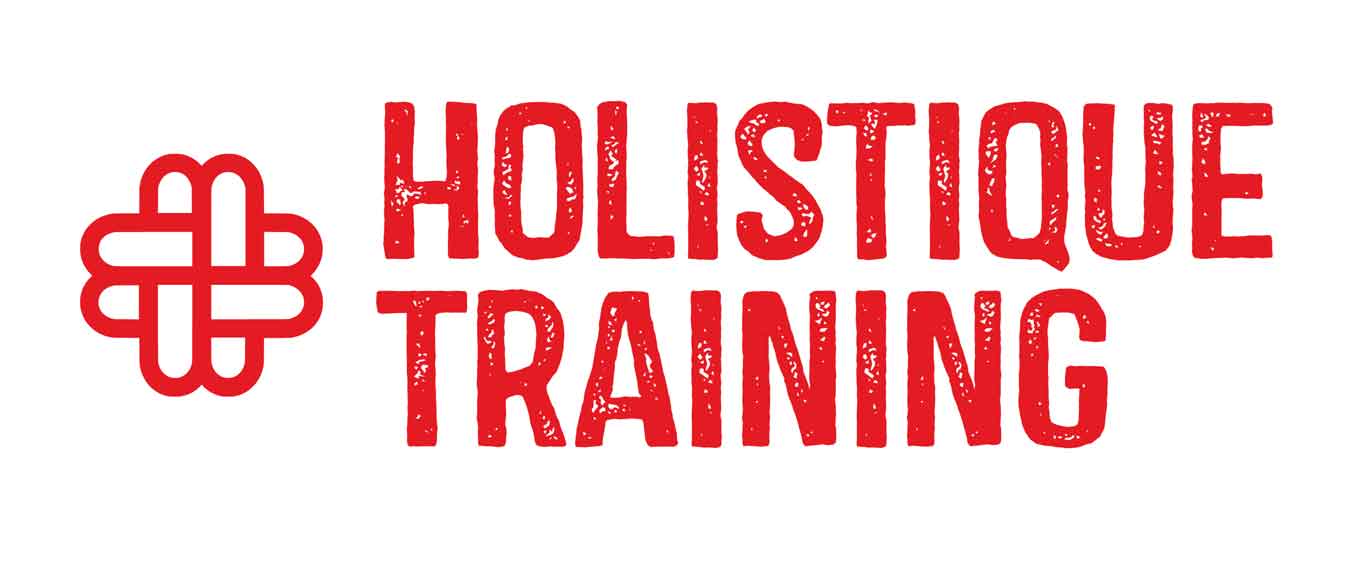- Table of Contents
- Introduction
- What is Brand Management?
- Differences Between Brand Management and Marketing
- Why is Brand Management Important?
- Differentiation in a Competitive Market:
- Building and Maintaining Brand Equity:
- Fostering Customer Loyalty and Trust:
- Enabling Premium Pricing:
- Facilitating Market Expansion:
- Enhancing Employee Engagement and Morale:
- Mitigating Risks During Crises:
- Brand Management Principles
- Consistency:
- Authenticity:
- Engagement:
- Innovation:
- Leadership:
- Flexibility:
- Brand Management Types
- 1- Strategic Brand Management:
- 2- Digital Brand Management:
- 3- Product Brand Management:
- 4- Corporate Brand Management:
- 5- Retail Brand Management:
- 10 Simple Tips for Effective Brand Management
- 1- Define Your Brand Identity
- 2- Understand Your Audience
- 3- Maintain Consistency
- 4- Engage with Your Audience
- 5- Monitor Brand Perception
- 6- Innovate Continuously
- 7- Leverage Storytelling
- 8- Empower Your Employees
- 9- Measure Brand Performance
- 10- Adapt to Change
- How to Develop a Brand Management Strategy
- 1- Conduct a Brand Audit:
- 2- Define Your Brand Purpose and Values:
- 3- Identify Your Target Audience:
- 4- Develop Your Brand Positioning:
- 5- Create a Consistent Brand Identity:
- 6- Develop a Content Strategy:
- 7- Leverage Digital Marketing Channels:
- 8- Engage with Your Audience:
- 9- Monitor and Measure Performance:
- 10- Adapt and Evolve:
- Conclusion
Introduction
Brand management is an essential aspect of any business that seeks to establish a strong presence in the market. It involves creating, maintaining, and improving a brand to ensure it resonates with the target audience and stands out from the competition. This blog post explores the concept of brand management, highlighting its importance, principles, and types. We will also provide ten simple tips for effective brand management and guide you on how to develop a robust brand management strategy.
What is Brand Management?
Brand management is the process of overseeing and guiding the various aspects of a brand, including its identity, image, and reputation. It involves strategic planning to ensure the brand remains relevant and appealing to consumers. Brand management encompasses everything from logo design and messaging to customer experience and product quality. It aims to create a cohesive and consistent brand image that aligns with the company's values and goals.
Differences Between Brand Management and Marketing
Brand management and marketing are integral components of a business strategy, yet they serve distinct purposes and require different approaches. Understanding the differences between these two concepts is crucial for businesses aiming to build a strong brand while effectively promoting their products or services.
Firstly, brand management is primarily concerned with the long-term development and positioning of a brand. It involves creating a brand identity that resonates with consumers and differentiates the brand from competitors. This process includes defining the brand's values, mission, and personality, and ensuring consistency across all brand-related activities. Brand management focuses on building brand equity, which is the value derived from consumer perception and loyalty.
On the other hand, marketing is more tactical and focuses on promoting products or services to generate sales. Marketing involves activities such as advertising, public relations, and sales promotions, designed to reach potential customers and persuade them to purchase. While marketing campaigns can be short-term and specific to particular products, brand management is ongoing and encompasses the broader image and reputation of the brand.
Moreover, brand management requires a strategic approach, emphasizing long-term relationships with consumers and fostering brand loyalty. It involves understanding consumer needs and adapting the brand to meet those needs consistently. Marketing, conversely, often involves immediate actions aimed at capturing attention and driving conversions.
The table below highlights key differences between brand management and marketing:
Aspect | Brand Management | Marketing |
Focus | Long-term brand identity and reputation | Short-term product promotion and sales |
Objective | Build brand equity and loyalty | Drive sales and increase market share |
Approach | Strategic and ongoing | Tactical and campaign-based |
Activities | Brand positioning, identity, and consistency | Advertising, promotions, and PR |
Outcome | Strong brand recognition and consumer trust | Increased sales and customer acquisition |
By understanding these differences, businesses can effectively allocate resources and efforts to both brand management and marketing to achieve their overall goals. Integrating these functions ensures a cohesive brand presence that not only attracts customers but also retains them over the long term.
Why is Brand Management Important?
Brand management is a critical component of a company's overall strategy, playing a pivotal role in its success and sustainability. Here are several reasons why brand management is essential:
Differentiation in a Competitive Market:
In today's crowded marketplace, consumers are bombarded with choices. Effective brand management helps a company stand out by creating a unique identity that distinguishes its products or services from competitors. A well-managed brand communicates its unique value proposition clearly, making it easier for consumers to choose it over others.
Building and Maintaining Brand Equity:
Brand equity refers to the value a brand adds to a product or service beyond its functional benefits. Strong brand management enhances brand equity by fostering positive perceptions and emotional connections with consumers. This added value can lead to higher price premiums, increased customer loyalty, and greater market share.
Fostering Customer Loyalty and Trust:
Consistent brand management helps build trust and loyalty among consumers. When a brand consistently delivers on its promises and maintains a positive reputation, customers are more likely to return and recommend it to others. This loyalty translates into repeat business and long-term profitability.
Enabling Premium Pricing:
A strong brand can command higher prices because consumers perceive it as offering superior quality or unique benefits. Effective brand management ensures that the brand's perceived value justifies its pricing strategy, allowing companies to maintain profitability even in competitive markets.
Facilitating Market Expansion:
A well-managed brand can facilitate entry into new markets or product categories. When consumers have positive associations with a brand, they are more likely to trust and try new offerings under the same brand umbrella. This trust can accelerate market penetration and reduce the risks associated with expansion.
Enhancing Employee Engagement and Morale:
A strong brand not only attracts customers but also employees. When employees believe in the brand and its values, they are more engaged and motivated, which can enhance productivity and reduce turnover. Brand management helps ensure that the brand's internal culture aligns with its external image, fostering a cohesive and driven workforce.
Mitigating Risks During Crises:
Effective brand management includes having a crisis management plan in place. When a brand faces negative publicity or a crisis, a strong brand reputation can mitigate damage and facilitate recovery. Consumers are more forgiving of brands they trust, making it easier to navigate challenging situations.
In summary, brand management is crucial for building a resilient, recognizable, and reputable brand that can withstand market fluctuations and consumer preferences. By investing in brand management, companies can secure a competitive edge, foster lasting customer relationships, and achieve long-term business success.
Brand Management Principles
Brand management principles are the foundational guidelines that help businesses create and maintain a strong, consistent, and appealing brand. These principles ensure that all brand-related activities align with the overarching goals and values of the company, fostering a cohesive brand identity that resonates with consumers. Here are some key principles of effective brand management:
Consistency:
Consistency is paramount in brand management. It involves ensuring that all brand elements, including logos, messaging, tone of voice, and visual identity, are uniform across all platforms and communications. Consistency helps reinforce brand recognition and trust, making it easier for consumers to identify and connect with the brand. By maintaining consistency, brands can create a stable and reliable image that consumers can depend on.
Authenticity:
Authenticity is about being genuine and transparent in all brand interactions. Consumers are increasingly drawn to brands that reflect honesty and integrity, as they seek genuine connections rather than superficial marketing tactics. Authentic brands communicate their values and mission clearly, building trust and loyalty among their audience. This principle encourages brands to stay true to their core identity and avoid misleading or exaggerated claims.
Engagement:
Effective brand management involves actively engaging with consumers to understand their needs, preferences, and feedback. Engagement goes beyond traditional marketing; it requires listening to consumers and fostering a two-way dialogue. Brands that prioritize engagement are better equipped to adapt to changing consumer demands and enhance customer satisfaction. This principle emphasizes the importance of building relationships rather than merely selling products.
Innovation:
Innovation is crucial for keeping a brand fresh and relevant in a rapidly evolving market. Brands must continuously innovate in their offerings, marketing strategies, and customer experiences to stay ahead of competitors and meet consumer expectations. Innovation involves embracing new technologies, exploring creative solutions, and anticipating market trends. By fostering a culture of innovation, brands can maintain a dynamic presence that captivates and excites consumers.
Leadership:
Strong leadership is essential for guiding brand management efforts and ensuring alignment with business objectives. Effective leaders inspire and empower teams to uphold brand values and execute strategies consistently. Leadership involves setting clear goals, providing direction, and fostering a collaborative environment where creativity and accountability thrive. This principle underscores the importance of having visionary leaders who can steer the brand toward long-term success.
Flexibility:
While consistency and authenticity are important, brands must also be adaptable to changing market conditions and consumer preferences. Flexibility allows brands to pivot when necessary, whether it's adjusting messaging during a crisis or exploring new market opportunities. This principle encourages brands to remain open to feedback and willing to evolve without compromising their core identity.
By adhering to these principles, companies can create a strong brand that resonates with consumers, fosters loyalty, and drives business growth. Effective brand management is not a one-time effort; it requires ongoing commitment to these principles to ensure the brand remains relevant and impactful in the ever-changing marketplace.
Brand Management Types
Brand management can be categorized into various types, each focusing on different aspects of building and maintaining a brand. Understanding these types helps businesses tailor their strategies to effectively manage their brand's presence and reputation across different channels and contexts. Here are some key types of brand management:
1- Strategic Brand Management:
This type involves long-term planning and positioning to achieve specific business goals. Strategic brand management focuses on creating a strong brand foundation by analyzing market trends, understanding consumer behavior, and identifying competitive advantages. It involves defining the brand's mission, vision, and values, and ensuring that all brand activities align with these core elements. By taking a strategic approach, brands can position themselves effectively in the market and build sustainable brand equity over time.
2- Digital Brand Management:
In today's digital age, managing a brand's online presence is crucial. Digital brand management encompasses all activities related to building and maintaining the brand's identity on digital platforms, such as social media, websites, and digital advertising. This type of brand management involves creating engaging content, optimizing for search engines, and leveraging data analytics to understand and reach target audiences. By effectively managing their digital presence, brands can enhance their visibility, engage with consumers, and drive online conversions.
3- Product Brand Management:
This type focuses on managing individual products or product lines to ensure they align with the overall brand strategy. Product brand management involves overseeing the development, marketing, and lifecycle of products, ensuring they meet consumer needs and reflect the brand's values. It requires close collaboration between product development, marketing, and sales teams to create compelling offerings that resonate with the target audience. By effectively managing product brands, companies can enhance their portfolio's appeal and drive customer loyalty.
4- Corporate Brand Management:
Corporate brand management involves managing the reputation and image of the company as a whole, rather than individual products. This type of brand management focuses on the company's identity, culture, and values, and how these elements are perceived by stakeholders, including employees, investors, and the public. Corporate brand management involves communicating the company's mission and values consistently and transparently, fostering a positive corporate image that supports business objectives. A strong corporate brand can enhance employee engagement, attract investors, and build trust with consumers.
5- Retail Brand Management:
Retail brand management pertains to brands that operate in the retail sector, focusing on store design, customer experience, and merchandising. This type of brand management involves creating a cohesive and appealing retail environment that reflects the brand's identity and values. It includes managing in-store promotions, visual merchandising, and customer service to ensure a consistent and positive shopping experience. By effectively managing their retail brand, companies can enhance customer satisfaction, drive foot traffic, and increase sales.
Each type of brand management plays a vital role in building a strong and cohesive brand. By understanding and implementing these different types, businesses can effectively manage their brand's presence across various channels and touchpoints, ensuring a consistent and engaging experience for consumers.
10 Simple Tips for Effective Brand Management
76% of consumers prefer purchasing products from a brand they feel a connection with over choosing a competitor's offerings – andeffective brand management helps with just that. It is crucial for building a strong, recognizable, and trusted brand that resonates with consumers. That being said, here are ten simple tips to help you manage your brand effectively:
1- Define Your Brand Identity
Clearly articulate your brand's mission, vision, values, and personality. This foundational step ensures that everyone in your organization understands what the brand stands for and how it should be represented. A well-defined brand identity serves as a guide for all branding and marketing efforts.
2- Understand Your Audience
Conduct thorough research to understand your target audience's needs, preferences, and behaviors. Knowing your audience allows you to tailor your messaging and offerings to meet their expectations and build stronger connections. Use tools like surveys, focus groups, and social media analytics to gather insights.
3- Maintain Consistency
Ensure that your brand's messaging, visual elements, and tone of voice are consistent across all platforms and touchpoints. Consistency reinforces brand recognition and trust, making it easier for consumers to identify and connect with your brand. Develop brand guidelines to help maintain this consistency.
4- Engage with Your Audience
Foster two-way communication with your audience through social media, email, and other channels. Actively engage with consumers by responding to comments, addressing concerns, and encouraging feedback. Engagement helps build relationships and loyalty, showing that you value your customers' opinions.
5- Monitor Brand Perception
Regularly assess how your brand is perceived by consumers and stakeholders. Use tools like social listening, surveys, and reviews to gather feedback and identify areas for improvement. Monitoring brand perception allows you to address negative impressions and reinforce positive ones.
6- Innovate Continuously
Stay ahead of the competition by continuously innovating your products, services, and marketing strategies. Embrace new technologies and trends to keep your brand fresh and relevant. Innovation shows that your brand is dynamic and responsive to changing consumer needs.
7- Leverage Storytelling
Use storytelling to create emotional connections with your audience. Share your brand's history, mission, and impact through compelling narratives that resonate with consumers. Storytelling helps humanize your brand and makes it more relatable and memorable.
8- Empower Your Employees
Ensure that your employees understand and embody your brand values. Provide training and resources to help them effectively represent the brand in their interactions with customers. Empowered employees can become brand ambassadors, enhancing the brand experience for consumers.
9- Measure Brand Performance
Use key performance indicators (KPIs) to measure the effectiveness of your brand management efforts. Track metrics such as brand awareness, customer loyalty, and market share to evaluate your brand's performance. Regular measurement allows you to adjust strategies and optimize results. Here are some KPIs you could measure:
KPI | Description |
Brand Awareness | Measures how well your brand is recognized by consumers |
Customer Loyalty | Evaluates the likelihood of customers returning or recommending your brand |
Market Share | Assesses your brand's percentage of total sales in its industry |
Customer Satisfaction | Gauges how happy customers are with your products/services |
Engagement Rate | Tracks the level of interaction consumers have with your brand online |
10- Adapt to Change
Stay flexible and open to change in response to market trends, consumer preferences, and industry developments. Adaptability ensures that your brand remains relevant and competitive in a constantly evolving landscape. Be willing to pivot strategies and explore new opportunities when necessary.
By following these tips, businesses can effectively manage their brand, ensuring that it remains strong, consistent, and appealing to consumers. Effective brand management not only enhances brand equity but also drives customer loyalty and business growth.
How to Develop a Brand Management Strategy
Developing a brand management strategy is essential for building a strong, cohesive brand that resonates with your target audience and supports your business objectives. Here’s a step-by-step guide on how to create an effective brand management strategy:
1- Conduct a Brand Audit:
Start by evaluating your current brand position and performance. A brand audit involves assessing your brand’s strengths, weaknesses, opportunities, and threats (SWOT analysis), as well as analyzing customer perceptions and competitor strategies. This provides a clear understanding of where your brand stands in the market and identifies areas for improvement.
2- Define Your Brand Purpose and Values:
Clearly articulate your brand’s purpose, mission, and values. This foundational step guides all branding efforts and ensures consistency across all channels. Your brand purpose should reflect what your brand stands for and what it aims to achieve, while your values should align with those of your target audience to foster trust and loyalty.
3- Identify Your Target Audience:
Understanding your target audience is crucial for tailoring your brand strategy effectively. Conduct market research to identify the demographics, preferences, and behaviors of your ideal customers. Use this information to create detailed customer personas that guide your messaging and marketing efforts.
4- Develop Your Brand Positioning:
Brand positioning involves defining how you want your brand to be perceived in the minds of consumers relative to competitors. Identify your unique selling proposition (USP) and communicate it clearly through all brand interactions. Your positioning should highlight the distinct advantages and benefits your brand offers, setting it apart from others in the market.
5- Create a Consistent Brand Identity:
Develop a cohesive brand identity that includes your logo, color palette, typography, and other visual elements. These should be consistent across all platforms to reinforce brand recognition. Additionally, establish a tone of voice that reflects your brand personality and resonates with your audience. Create brand guidelines to ensure consistency in all communications.
6- Develop a Content Strategy:
Create a content strategy that aligns with your brand goals and engages your target audience. This includes determining the types of content you will produce (e.g., blogs, videos, social media posts), the platforms you will use, and the frequency of your communications. Your content should reflect your brand values and provide value to your audience, fostering engagement and loyalty.
7- Leverage Digital Marketing Channels:
Utilize digital marketing channels such as social media, email marketing, and search engine optimization (SEO) to enhance your brand’s visibility and reach. Research shows that approximately 68% of online activities start with a search engine – which further confirms the importance of utilizing SEO in your brand management strategy. Tailor your strategies for each channel to effectively engage your audience and drive conversions. Digital marketing allows for precise targeting and measurement, helping you optimize your efforts.
8- Engage with Your Audience:
Foster engagement with your audience through interactive and personalized experiences. Encourage feedback, respond to comments, and actively participate in conversations on social media and other platforms. Engagement builds relationships and loyalty, demonstrating that you value your customers’ opinions.
9- Monitor and Measure Performance:
Regularly assess the effectiveness of your brand management strategy using key performance indicators (KPIs) such as brand awareness, customer satisfaction, and market share. Use analytics tools to track performance and identify areas for improvement. Continuous measurement allows you to refine your strategies and achieve better results.
10- Adapt and Evolve:
Stay flexible and open to change in response to market trends, consumer preferences, and industry developments. Adapt your strategies as needed to ensure your brand remains relevant and competitive. Be willing to innovate and explore new opportunities to enhance your brand’s impact.
By following these steps, you can develop a comprehensive brand management strategy that effectively positions your brand in the market, engages your audience, and supports your business goals. A well-crafted strategy ensures that your brand remains strong, consistent, and appealing, driving long-term success and growth.
Conclusion
Effective brand management is a comprehensive and dynamic process that requires strategic planning, consistent execution, and ongoing evaluation. As businesses strive to build strong, memorable brands that resonate with consumers, understanding the principles and types of brand management is essential. Implementing simple yet impactful tips can significantly enhance your brand's presence and drive long-term success.
Our course, Brand Management & Corporate Identity, is designed to equip you with the knowledge and skills needed to navigate the complexities of today's competitive landscape. Through this course, you will gain insights into developing a robust brand management strategy that ensures your brand remains relevant, trusted, and valued by your audience.
With expert guidance, practical tools, and real-world examples, you'll learn how to effectively position your brand, engage with your audience, and measure performance. Whether you're looking to refine your existing brand strategy or build one from scratch, our course offers the comprehensive framework needed to achieve your branding goals. Embrace the opportunity to elevate your brand and secure its place in the market by enrolling in Brand Management & Corporate Identity today.

























